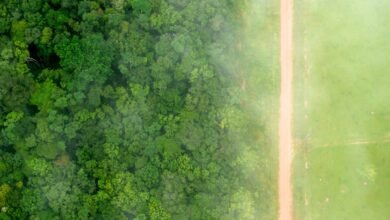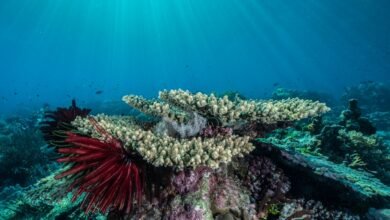Protecting forests to benefit people

It’s easy to feel discouraged about the state of the planet. Though the headlines seem bleak, the fight to protect nature and the climate is being won in the field — through small triumphs that don’t make the news.
Here are three conservation successes you should know about.
1. Reforestation offers hope after floods
In the Indonesian province of West Java, the Lembur Pasir community’s dependence on the forest of Mount Gede Pangrango National Park is contributing to its destruction, as families cut trees to clear space for agriculture. Without these
trees, there is little protection from natural disasters — such as the series of floods that ravaged the province in 2016.
Following the floods, Conservation International Indonesia began a two-stage restoration program to plant new trees in the area, restoring 100 hectares (250 acres) of land. Together with the community, Conservation International staff planted more
than 30,000 seeds in 2016, returning several times to help monitor and maintain the seedlings. The initiative’s second stage was completed two years later in the Guntur Papandayan conservation forest, where 30,000 more seeds were planted in an effort to create new habitat for wildlife.
Conservation International staff developed educational courses in parallel with the restoration program, incorporating films, games and music to teach children in the community about the importance of protecting nature. The courses reach more
than 1,000 students of all ages, and were deemed such a valuable tool for the community that a local company, Star Energy, pledged funding to continue them.
And as the seedlings grow into mature trees, a new generation is learning how critical it is to maintain these forests for the well-being of the entire Lembur Pasir community.
2. In Suriname, a village pledges to protect nature
Conservation International Suriname and the village of Alalapadu, in the country’s south, recently signed a renewed conservation agreement — a deal between a community and a group funding a conservation project — to expand the amount of land under their protection from 70,000 hectares (172,973 acres) to 235,000 ha (580,700 acres). Though the rainforests of the South American
country are home to an array of animal and plant species, the most valuable resources to the Alalapadu community are the Tukha trees — profitable for their oil and brazil nuts — which are often cut down by farms attempting to make
room for agricultural plots. Under this agreement, community leaders and villagers will protect both these trees and monitor any other abuses of nature.
The conservation agreement has helped to protect local ecosystems and wildlife in Alalapadu from wildfires, illegal wildlife trading and mining. In the coming months, Conservation International Suriname will provide educational courses to support Tukha oil production, waste management and sustainable farming techniques in
the Alalapadu community.
Conservation International Suriname will continue monitoring the agreement’s impact so that it can be used as a model for other communities who rely on the forests that cover 94 percent of the nation.
3. A community is using cameras for conservation — with promising results
Near the Alto Mayo Protected Forest — an area of the Amazonian rainforest twice the size of New York City — the Awajun native community of Shampuyacu manages its own swath of land, covering almost 5,000 hectares (12,355 acres). In recent years, more than half of Awajun-managed
forests were lost to illegal logging, decreasing the habitat area for wildlife targeted by poachers.
With support from Fondation Ensemble — a French organization that helps support conservation projects in Peru and Ecuador — and Conservation International,
community patrollers are working tirelessly to protect these local species and forests. Through a series of training sessions, Awajun patrollers were taught how to read maps, use GPS and install 24 camera traps — motion-detector cameras
— to track wildlife within the forests and to identify illegal hunters and loggers. A month later, the images from the camera traps were collected and reviewed.
The results were promising.
“When we reviewed the images captured by the camera traps, we found images of tiger cats, collared peccaries and South-American coatis that generated surprise among the patrollers, because they had not seen these animals before within their community’s
forest,” said Jimmy Pinedo, who helps manage camera trapping programs for Conservation International Peru.
In total, researchers tallied 25 different species wandering through the forests surrounding Shampuyacu. This data will act as a baseline to track further progress of the camera trap program, where the results will be shared with the rest of the community
in an effort to increase the awareness of these species and recruit more patrollers.
Kiley Price is a staff writer for Conservation International.
Want to read more stories like this? Sign up for email updates here. Donate to Conservation International here.
Cover image: The Alalapadu forest, Suriname. (© Renè Ockhuijsen)
Further Reading:
Source link




